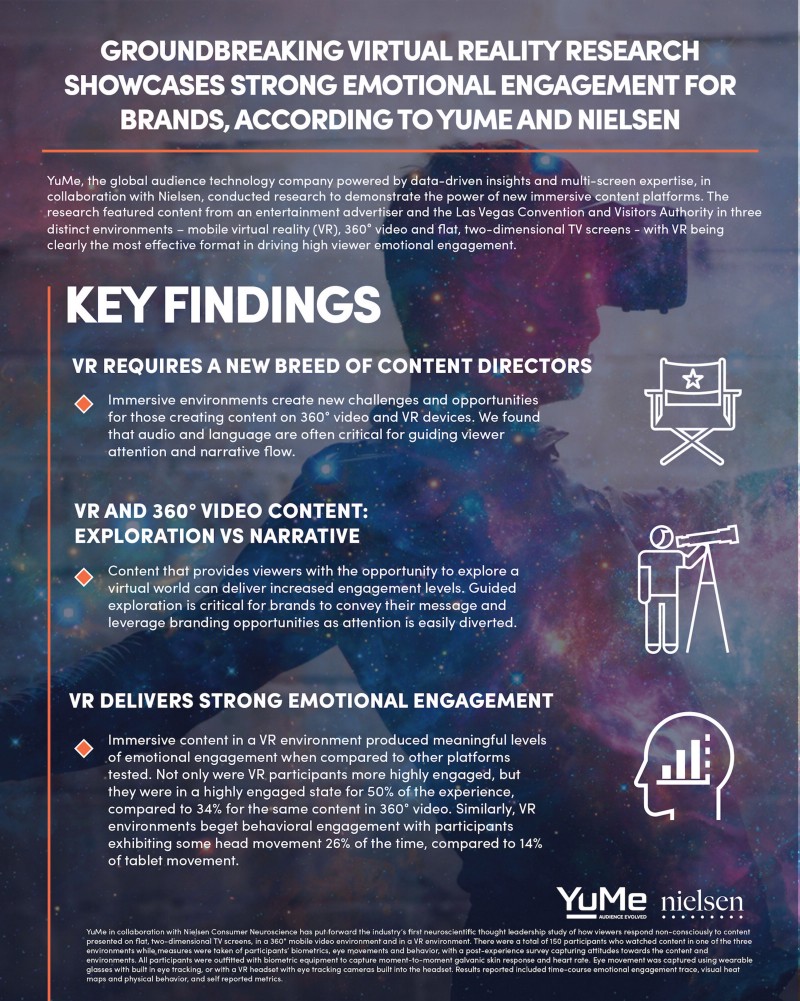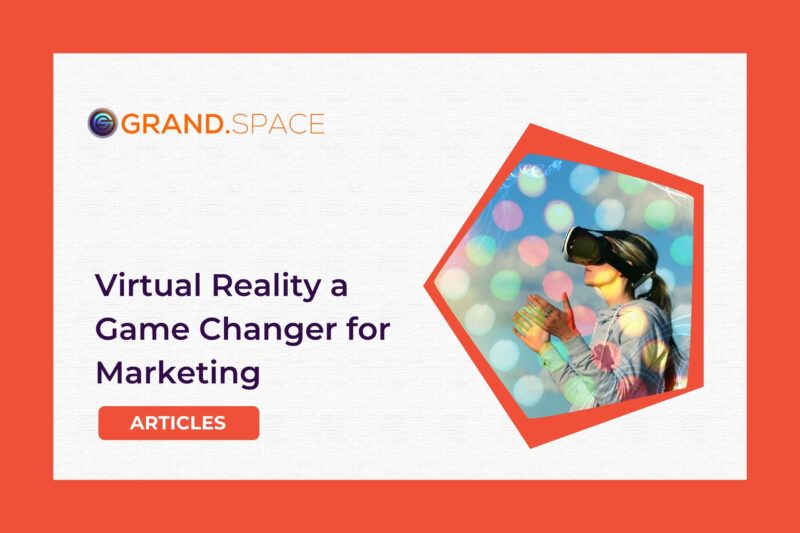Virtual reality brings an incredible potential for marketers to elicit highly strong emotional engagement, a study by YuMe and Nielsen claims.
Powered by the integration of Nielsen’s biometric, eye-tracking and behavioral coding technologies, the study shows that virtual reality presents unique ways of interaction that wasn’t possible before.
According to Nielsen and YuMe experts, brands must understand this journey to divert attention to key branding moments, without interrupting the whole experience.
“Brands have more platforms than ever on which to connect with consumers, and this study showcases how virtual reality presents a unique opportunity to deliver a highly-engaging experience with the right content,” said Dr. Carl Marci, Nielsen’s Chief Neuroscientist.
“Brands have more platforms than ever on which to connect with consumers, and this study showcases how virtual reality presents a unique opportunity to deliver a highly-engaging experience with the right content,” said Dr. Carl Marci, Nielsen’s Chief Neuroscientist.
YuMe, and Nielsen’s research featured content from an entertainment advertiser and the Las Vegas Convention and Visitors Authority (LVCVA).
In order to make a comparison, consumers experienced the content in three different platforms. Mobile VR, 360-degree video on a flat screen and flat, two-dimensional TV screens.
The YuMe, and Nielsen’s research claims, content on VR produced the highest emotional engagement, but the self-driven discovery process can reinforce some challenges in connecting consumers with key branding moments.

Here are some key takeaways from the study;
- VR elicited 27% higher emotional engagement than in a 2D environment and 17% higher emotional engagement than a 360-degree video on a flat screen.
- VR viewers are emotionally engaged 34% longer than when they view the same content in 2D and 16% longer than when they view the same content in 360-degree video on a flat screen.
- Content that provides viewers with the opportunity to explore a virtual world can deliver increased engagement, but storyline flow is critical for effectiveness. Since viewers are in control of their own experience, attention is easily diverted to aspects in view (scenery, landmarks) apart from the primary storyline.
- Guided exploration is critical for brands to convey their message and leverage branding opportunities.
- Immersive environments offer viewers the opportunity to play ‘director’ of their experience. This creates new challenges and opportunities for those directing content creation; they must leverage new techniques while re-considering what may not translate well from linear environments.
- The use of audio and language are critical for guiding viewer attention and narrative flow.
“Our research with Nielsen shows that VR and 360-degree video, done correctly, provides a very high level of viewer emotional engagement,” said Paul Neto, Senior Director, Research, YuMe in a written statement.
“It also shows there are no shortcuts to the most effective video engagement. VR and 360 experiences are at their most effective in driving audience engagement when content is of very high quality and content developers leverage the specific strengths of each format,” they added.
